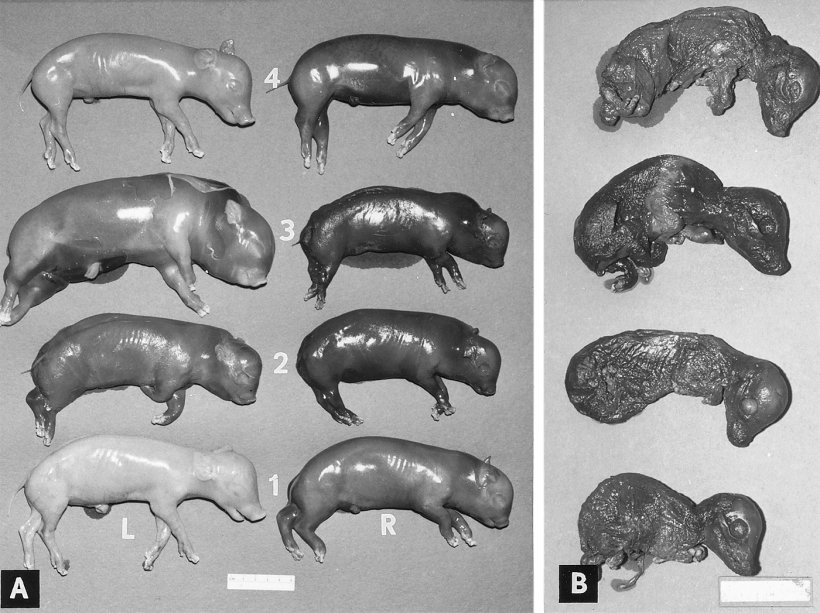The evolution of PPV and its implications for swine health management are discussed by Professor André Felipe Streck of the Institute of Biotechnology at the University of Caxias do Sul in southern Brazil
Why was there the original idea of PPV being a stable virus?

In the past PPV, a DNA virus, was considered more stable than other viruses, with a substitution rate or mutation rate close to that of the host. This was because it uses host polymerase for replication and the polymerase complex in animal cells acts as a repair unit. But for some reason, in the parvovirus the repair unit doesn't work so well, the polymerase acts more like in an RNA virus and inserts a lot of mutations in the DNA sequence
This genetic divergence that we see today, with its roots going far back, was it an evolution by mutation or recombination?
Mutation drives this evolutionary process of parvovirus. Although it is a DNA virus, we can estimate for PPV a very high mutation rate or substitution rate.
What has that evolution process generated today in terms of genetic variability?
Some genetic variability was observed in PPV from strains from Brazil in the 90’s, involving mutations mainly in the virus shell or capsid and allocated to two phylogenetic groups. Subsequently, studies from Professor Truyen in Germany saw two other phylogenetic clusters, in which there was the start of a predominance of the 27a strains. Other studies afterwards also found new clusters and 27a-like strains in different continents, such as in China, as well as in European locations including Austria and Romania.
What is different about the strain called 27a that was isolated originally in Germany? Does 27a differ both genetically and antigenically?
We now speak about 27a-like strains because the original 27a maybe does not exist anymore. They differ because they have some new amino acids located in a very important part of the capsid. We call these locations ‘loops’ and they are exactly the parts that stimulate the immune system. The changes in some points of these loops can have other effects, like a better replication activity of these strains. This way, the 27a-like strains are very important in the field.
You mention antigenic differences. Is a 27a-like PPV generally more virulent?
Studies by Professor Truyen did see that 27a was more virulent, compared to a more standard PPV virus. Importantly, the variants could replicate better in some cases and antibodies raised against some older strains have some reduced neutralising capability against these 27a strains.
How is the performance of the actual commercial vaccines affected by these new strains?
The antibodies generated by some old vaccine strains have their neutralising capability reduced by the new PPV.
Is this PPV evolution an international phenomenon?
So far, these 27a-like strains occur mostly in Europe and the Americas. Reports from Asia are isolated by comparison. For some Asian countries like China we observe a predominance of other strains and a greater diversity of the strains there. In Europe, while 27a-like PPV predominates in sow herds, the strains in wild boar populations are genetically more diverse.
Could our use of established vaccines have played a role in influencing the evolution of the parvovirus?
We do not need to blame the vaccine for these new mutants or new strains. An early hypothesis was that the emergence of new capsid profiles could be due to viral adaptation towards vaccines. These strains were sometimes called escaped mutants. However, in our studies we could see how a very adapted strain could manage to stand out from others because it was more fit to compete with them. Vaccination could even reduce some genetic diversity. Genetic variability usually occurs when the virus has a little bit more freedom to replicate, which does not happen when you have a vaccine. Vaccinating imposes serious selective pressure on the predominance of certain strains. That is why it is important to monitor wild boar populations, which do not have vaccines and therefore usually have a higher genetic diversity for porcine parvovirus and other viruses.
You view new vaccine developments as welcome, to take account of the emergence of different dominant virus strains in pig populations and the response that they might have to the traditional vaccines?
The improvement of vaccine technology must be constant. We have to keep in mind that this virus has a high mutation rate and will never stop undergoing changes. I also highlight the importance of monitoring these changes, in countries with large swine production systems. This evolutionary process is geographically related and therefore the vaccine companies as well as swine producers and veterinarians must be aware of the information.





